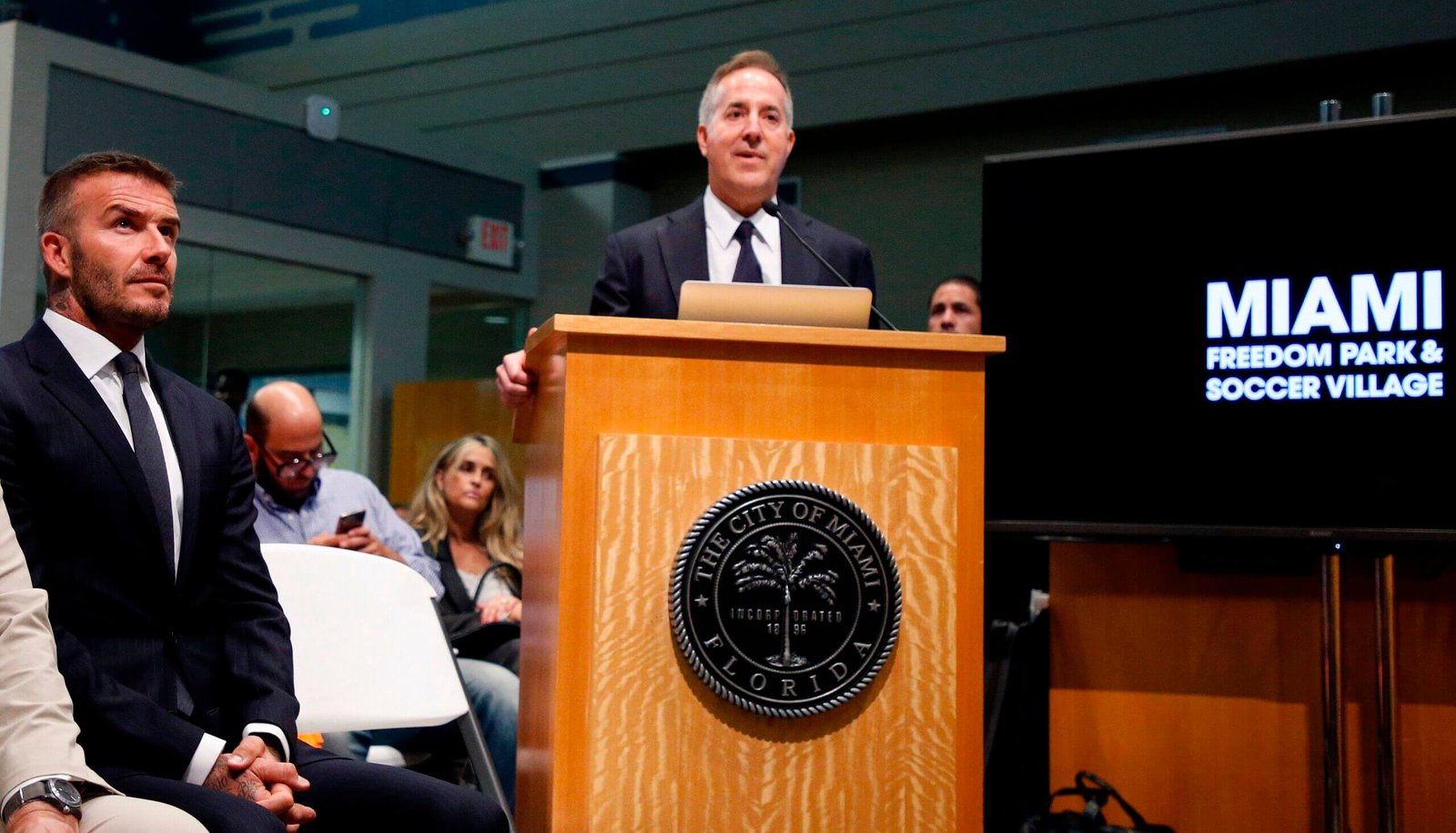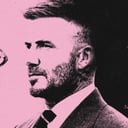On Wednesday, Major League Soccer side Inter Miami released a video announcing they would begin play at Freedom Park — the team’s long-awaited new home — in 2026.
To many observers and fans in Miami, it felt familiar.
Miami co-owners David Beckham and Jorge Mas have made many of these announcements over the past decade as their club navigated stadium attempts at four different locations. At each of them, there’s been some measure of pomp and circumstance.
There was certainly some measure of it in 2014, when Beckham first addressed his decision to bring an MLS team back to the Florida city, 12 years after the Fusion folded, answering a reporter’s question of “Why Miami?” very simply. “Why not?” he asked.
Over the years that followed, Beckham would get his answer as he tried and failed repeatedly to get a stadium deal over the line. Miami’s ownership, though, was persistent, and in 2026 they will finally get their reward: a 25,000-seat stadium, part of a larger, mixed-use facility adjacent to Miami International Airport.
It is not the gleaming, waterfront stadium Beckham envisioned when he chose Miami in the first place, but after such a long and arduous journey, it’ll do.
Here’s a look at how Miami got here…
PortMiami (2014)
Beckham’s ownership group unveiled their earliest stadium plans the way every MLS owner does: with a futuristic, sometimes unrealistic-feeling CGI rendering.
The team’s “PortMiami” concept called for a 25,000-seat stadium to be built on the city’s waterfront, adjacent to the Kaseya Center (then named American Airlines Arena), home of the NBA’s Miami Heat and NHL’s Florida Panthers.
The plan, which also included provisions for commercial development, faced immediate scrutiny, most notably from cruise ship giant Royal Caribbean. That company formed an alliance with other tenants of the port, claiming that Inter Miami’s proposed stadium would worsen traffic in the area and interfere with the port’s day-to-day work.
In May 2014, the Dade County government voted — nearly unanimously — against the idea of putting a stadium at the port.
Museum Park (2014)
Inter Miami’s next proposal was somehow even more ambitious. The team, along with Miami-Dade County Mayor Carlos Giménez, floated the idea of filling in a massive boat slip not far from the original PortMiami site and building there.
The plan had too many moving parts: parts of the land the stadium would sit on were owned by the county, another by the city. Millions would have to be spent pumping out water from the site and filling it in with rocks and earth. And local residents had their own concerns — obstructing the beachfront views from their multi-million dollar condos, for example.
The plan was scrapped after just a few months.
Plans are inspected at Miami’s Hotel Intercontinental in May 2014. (Aaron Davidson/Getty Images)
Little Havana (2015)
MLS first eyed land in the Little Havana district for a soccer stadium long before Inter Miami was even a thing.
In 2007, the league flirted with the idea of teaming up with Spain’s FC Barcelona on a franchise, which would have been owned by Marcelo Claure, a local businessman. Claure was eyeballing land adjacent to Marlins Park, home of MLB’s Florida Marlins. That never came to fruition but, in 2015, Beckham’s group revisited the location, striking a tentative deal with the city to construct a stadium next to the Marlins’ ballpark. But Beckham and company struggled to do the same with local landowners, and that agreement fell apart quickly.
It was around this time that the Miami ownership released a statement saying that there were “many cities” that would welcome Beckham and his ownership group. MLS commissioner Don Garber applied his own pressure, suggesting the league would simply not expand to Miami without a solid downtown stadium deal.
Overtown (2015-2018)
Beckham’s group eventually moved on to a site in Overtown, just northwest of downtown. After the three failed attempts detailed above, this was the site that got the furthest.
Beckham and company negotiated deals with private landowners, even going so far as to purchase a small parcel of land at the site. They sought to secure the rights to another block adjacent to where the stadium would be and, in late 2015, MLS’ board of governors approved the site.
The entire plan, though, was scrapped after construction and engineering tycoon Jorge Mas — and his brother Jose — joined Beckham’s ownership group.
Miami Freedom Park (2018-present day)
The addition of the Mas brothers, who are intimately familiar with the complexities of doing business in southern Florida, was a crucial step in Miami’s efforts to get a stadium deal over the line.
Ownership worked quietly throughout 2018 on their Freedom Park proposal and went public with it in July of that year, releasing — what else? — a series of stadium renderings. “I give you a teaser,” Jorge Mas wrote in a post on X, then Twitter.
The plan was ambitious: a 25,000-seat stadium, plus space for restaurants, retail establishments and hotels. A public park was part of the proposal too, as was a “golf entertainment facility”, maybe aimed at easing heartburn over the loss of Melreese Golf Course, the area’s only municipally-operated set of golf links in a traditionally underserved area of Miami.
Mas, along with Inter Miami’s other owners, touted the potential benefits of the project: at least $2.7billion in rent paid to the city for use of the land and a projected 15,000 new jobs.

Beckham listens to Jorge Mas address a City of Miami commissioners meeting in July 2018 (Rhona Wise/AFP via Getty Images)
In the fall of 2018, after only a few days of consideration, county commissioners voted to put the idea of leasing the land to Beckham and company to a public referendum that November.
Environmental experts had their concerns as the vote approached: the golf course had been constructed on the former site of a city incinerator, and the ash and groundwater beneath it was badly contaminated with several toxic chemicals, among them arsenic. To some, the initial amount set aside to clean the site up — some $36million — felt inadequate when compared to similar projects in the area.
And then there was the proximity of the site to Miami International Airport — just a stone’s throw away from one of the world’s busiest air hubs.
But come November 2018, Beckham and his co-owners scored a major coup when some 60 per cent of the voting public approved of the city’s plan to negotiate exclusively with the team’s ownership group on a lease of the golf-course site. That, however, was only part of the equation: Miami’s owners had to win the approval of four out of five Miami city commissioners to fully move forward with the lease.
The group would face other challenges as well — even before the referendum, local residents were opposing the measure, with one filing a lawsuit to invalidate its results. A judge ruled in favor of the city of Miami in that case in 2019. There were other concerns, including an ethics complaint filed against Miami ownership claiming Mas and company had engaged in improper lobbying. That complaint was also dismissed.
In the meantime, Beckham had set a very ambitious goal for his MLS club: they would move into their new home in 2022. That would end up proving almost farcical.
In August 2019, those previously-mentioned environmental concerns reared their ugly head when testing revealed levels of arsenic and barium over twice the legal limit and even revealed pieces of glass, tile and other debris in the uppermost layers of soil at the site. Melreese Golf Course, which continued to operate until 2023, was closed while inspectors determined if players and employees at the course were in any immediate danger. It re-opened a week later.
Beckham’s team was slated to take the field for the first time in 2020, and they did so at DRV PNK Stadium, a modular facility in Fort Lauderdale, a short drive north from Miami itself. The stadium, part of the club’s training facility, was built on the footprint of Lockhart Stadium, the former home of the NASL’s Fort Lauderdale Strikers and the Miami Fusion, the first attempt at putting an MLS franchise in the city.

Lionel Messi and Luis Suarez celebrate at DRV PNK Stadium in May this year (Megan Briggs/Getty Images)
At league level, Garber and others were growing impatient with Miami’s timeline. In March 2020, just a week after Inter Miami played an MLS match for the first time, the commissioner expressed his concern with the protracted timeline.
“I think their temporary stadium will be terrific, and we hope to get the big stadium in downtown Miami over the finish line,” Garber said, as reported by The Miami Herald. “They’re going to play (in Fort Lauderdale) as long as they have to, but they are not going to stay in Fort Lauderdale. There will come a time where we’re going to have to push the envelope and get that deal finalized. We’ve been doing it for 10 years.”

GO DEEPER
‘We launched a brand, not a team’: Inside Inter Miami’s disastrous start in MLS
For their part, Miami’s owners were continuing to suggest they could bring a lease in front of the city commissioners in a matter of months, but that math was changed not only by political complexities but by the Covid-19 outbreak.
Finally, in April 2022, Beckham and company got their most important victory to date — by a 4-1 vote, city commissioners approved a 99-year ground lease to Inter Miami’s ownership. In September, a vote by the same margin approved zoning regulations for the site, clearing the way for construction to begin.
That happened shortly thereafter, with Inter initially targeting a debut sometime in 2025 — the final season of Lionel Messi’s contract, by which time he will be 38 years old.
Earlier this week, though, 2025 became 2026, just the latest – but hopefully the final — delay in their long-awaited stadium project.
(Top photo: Patrick T. Fallon/AFP via Getty Images)
Read the full article here


